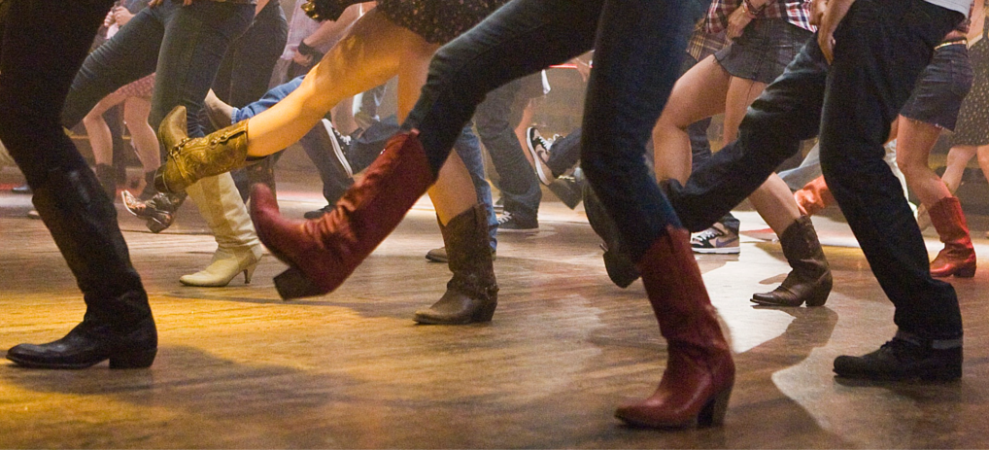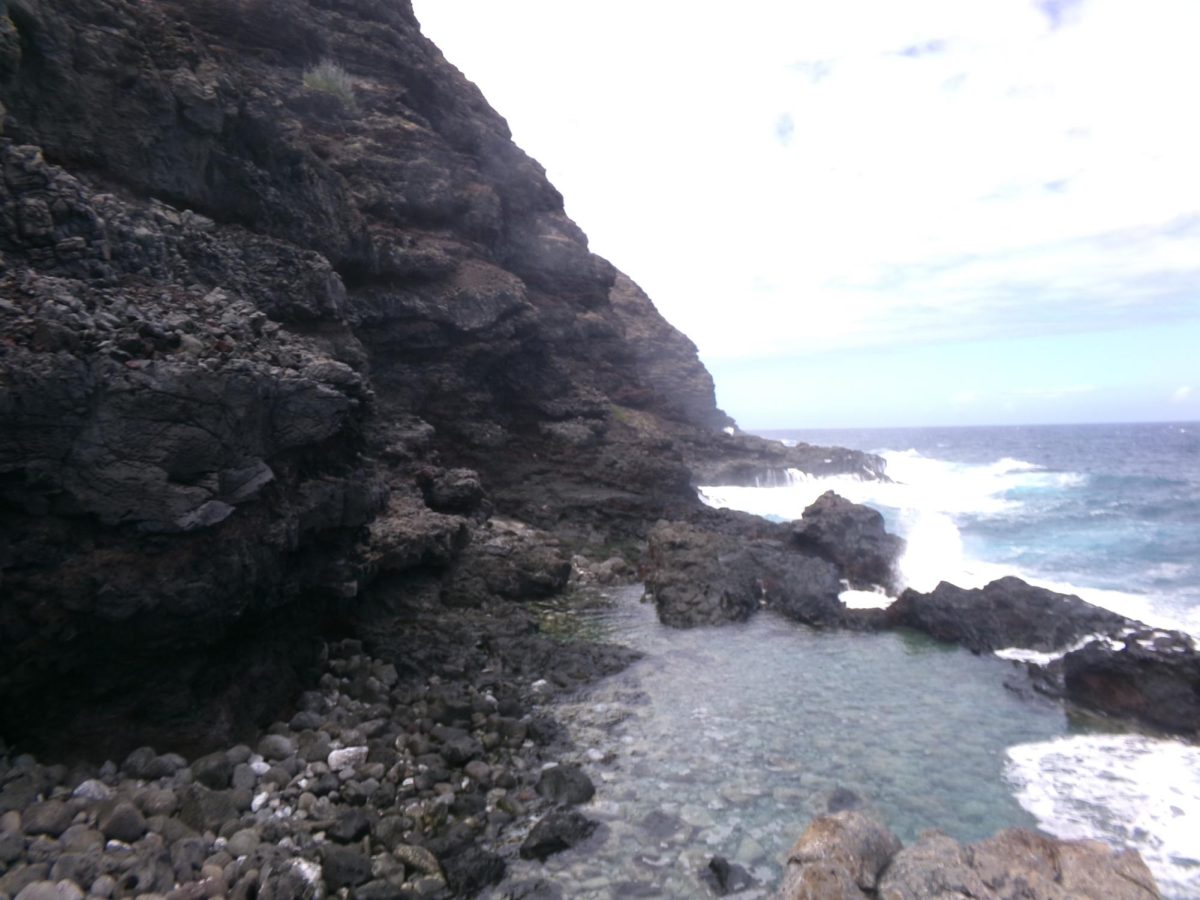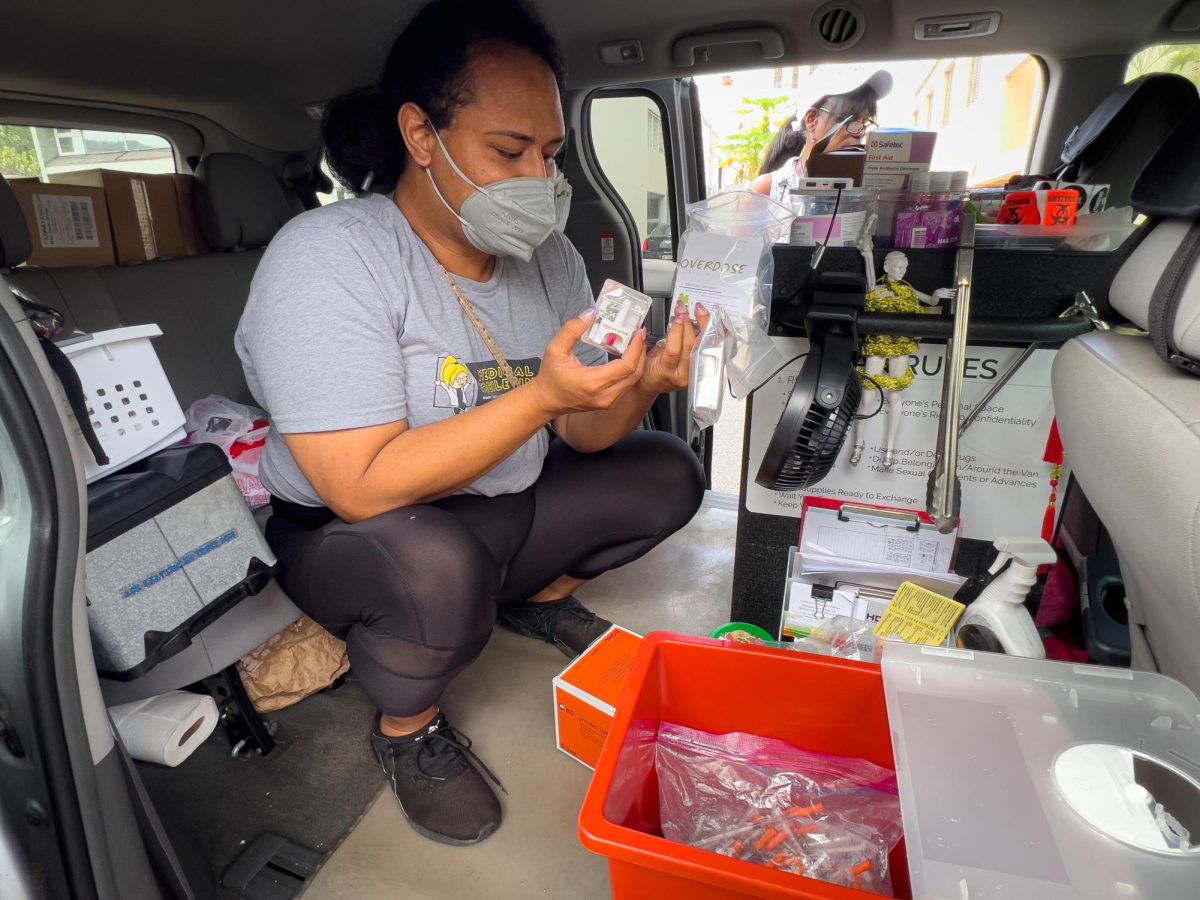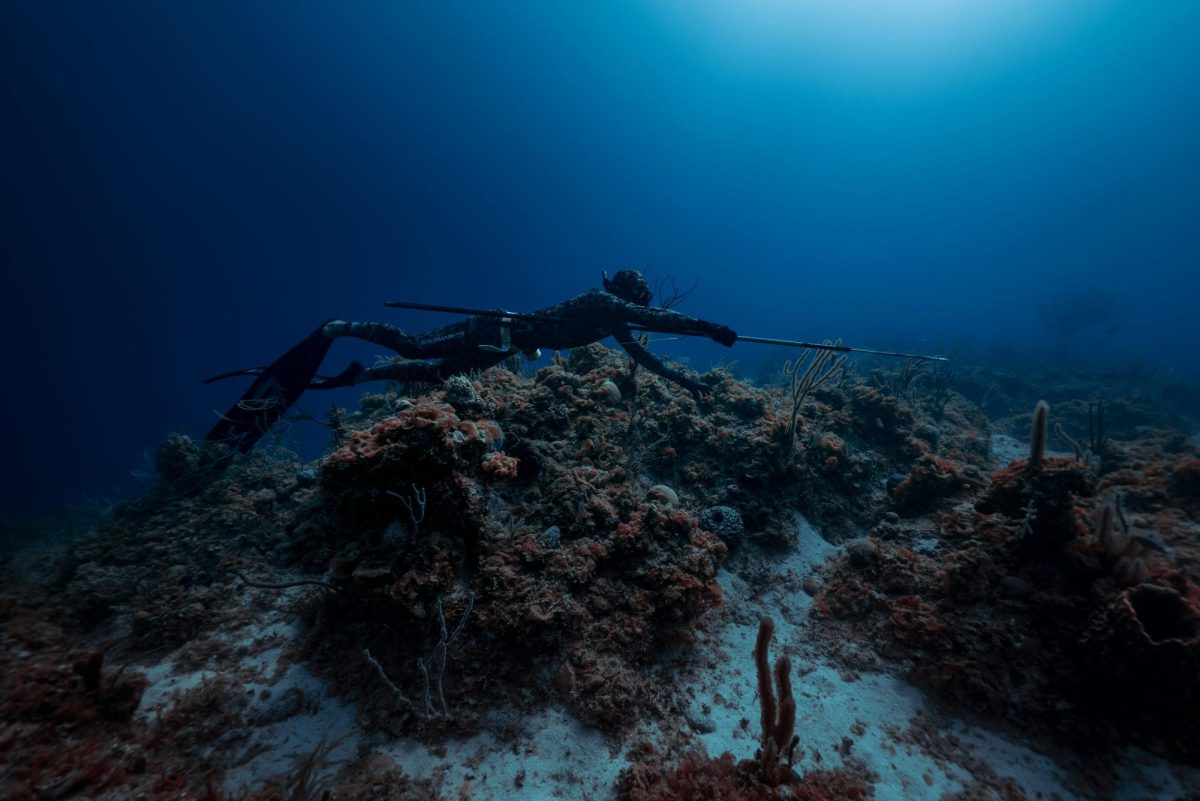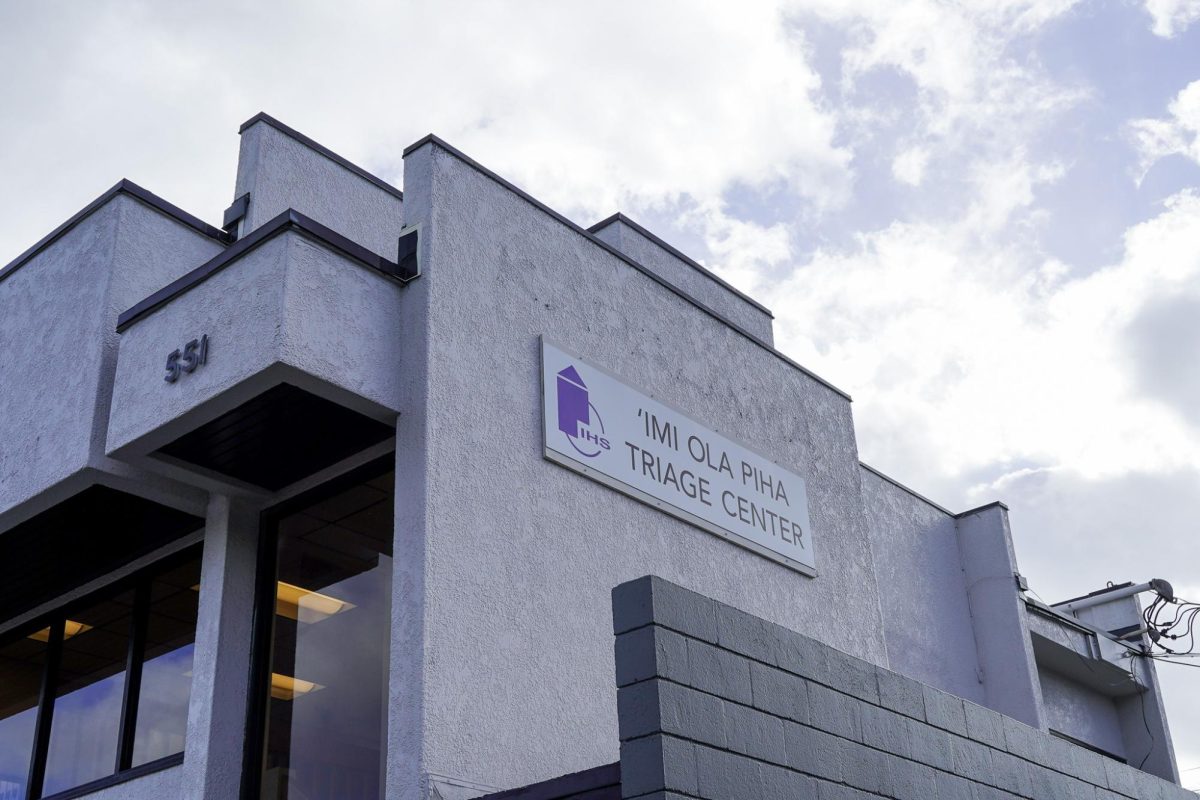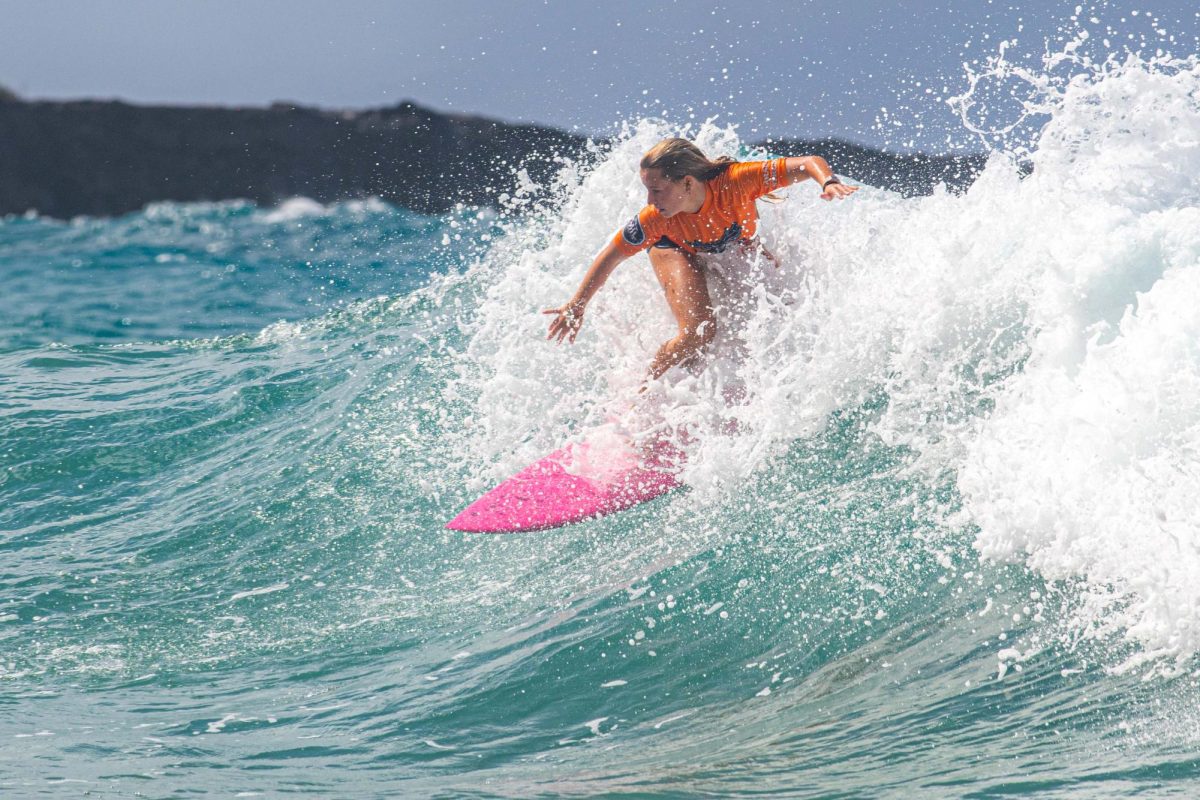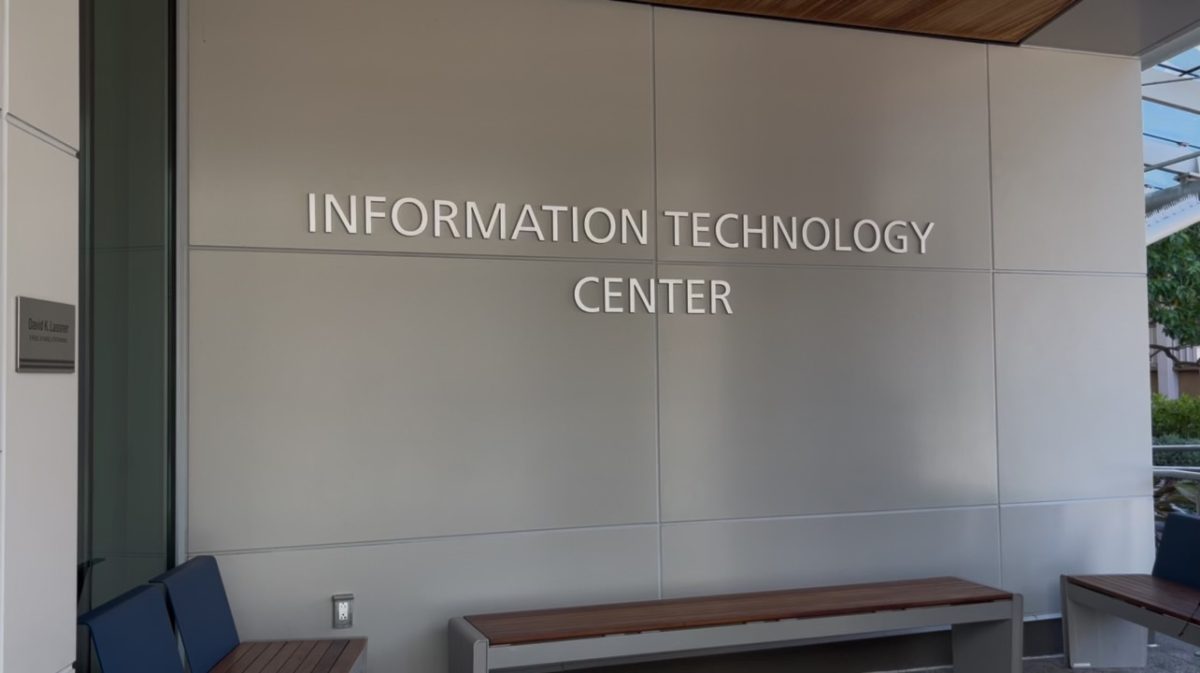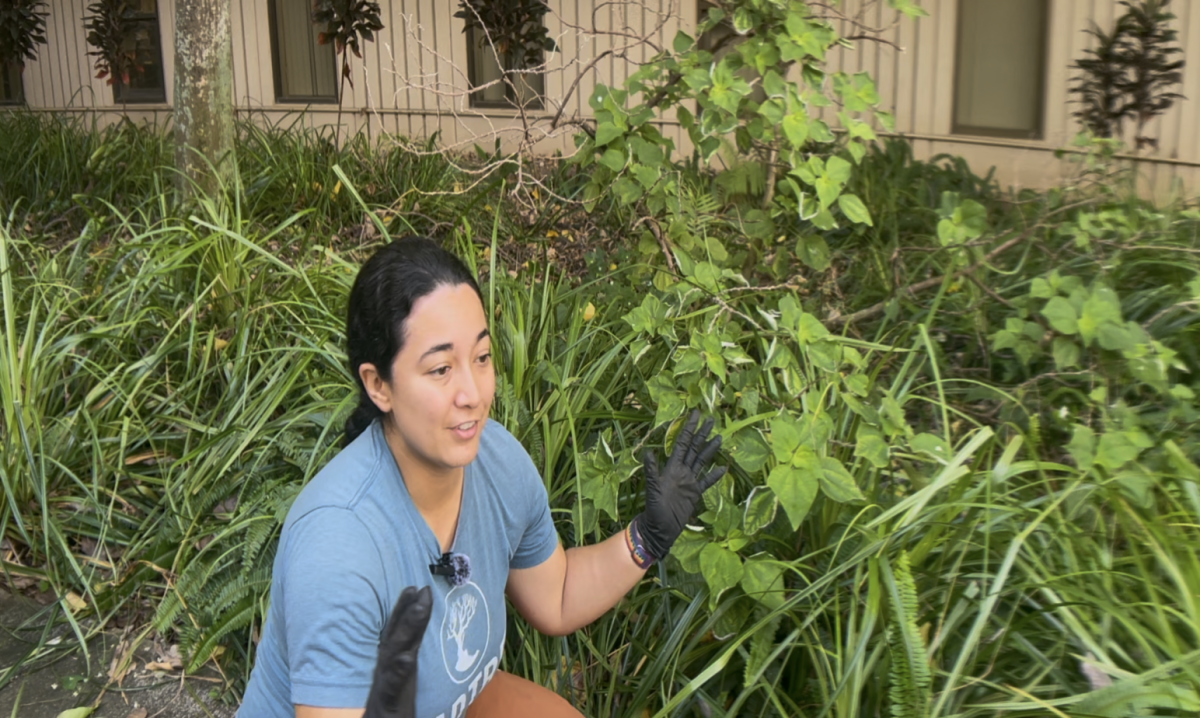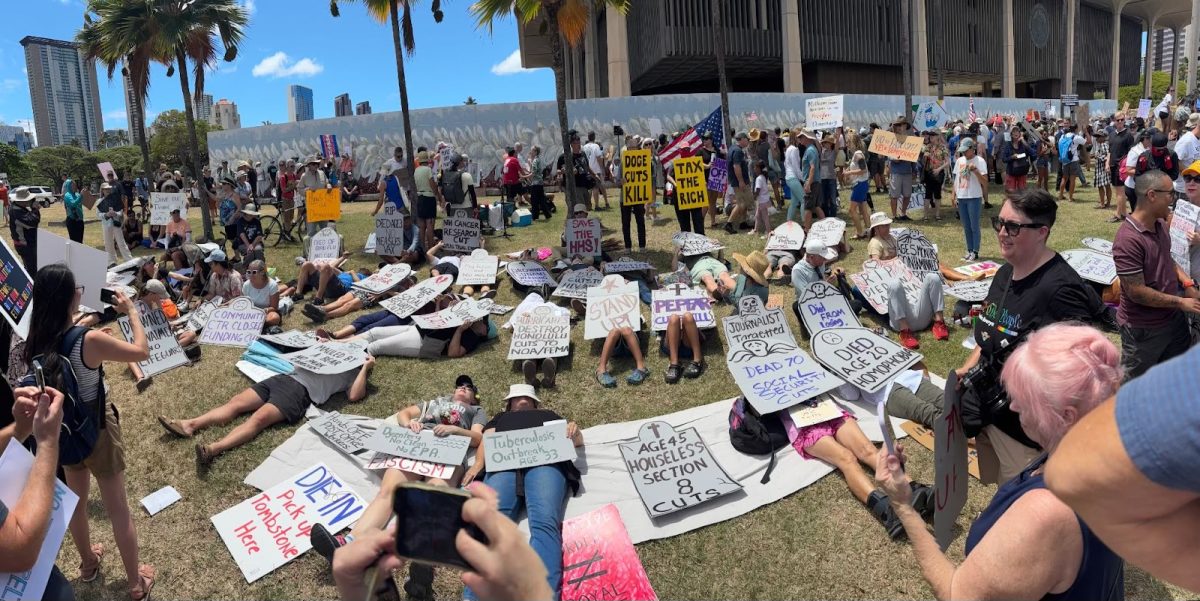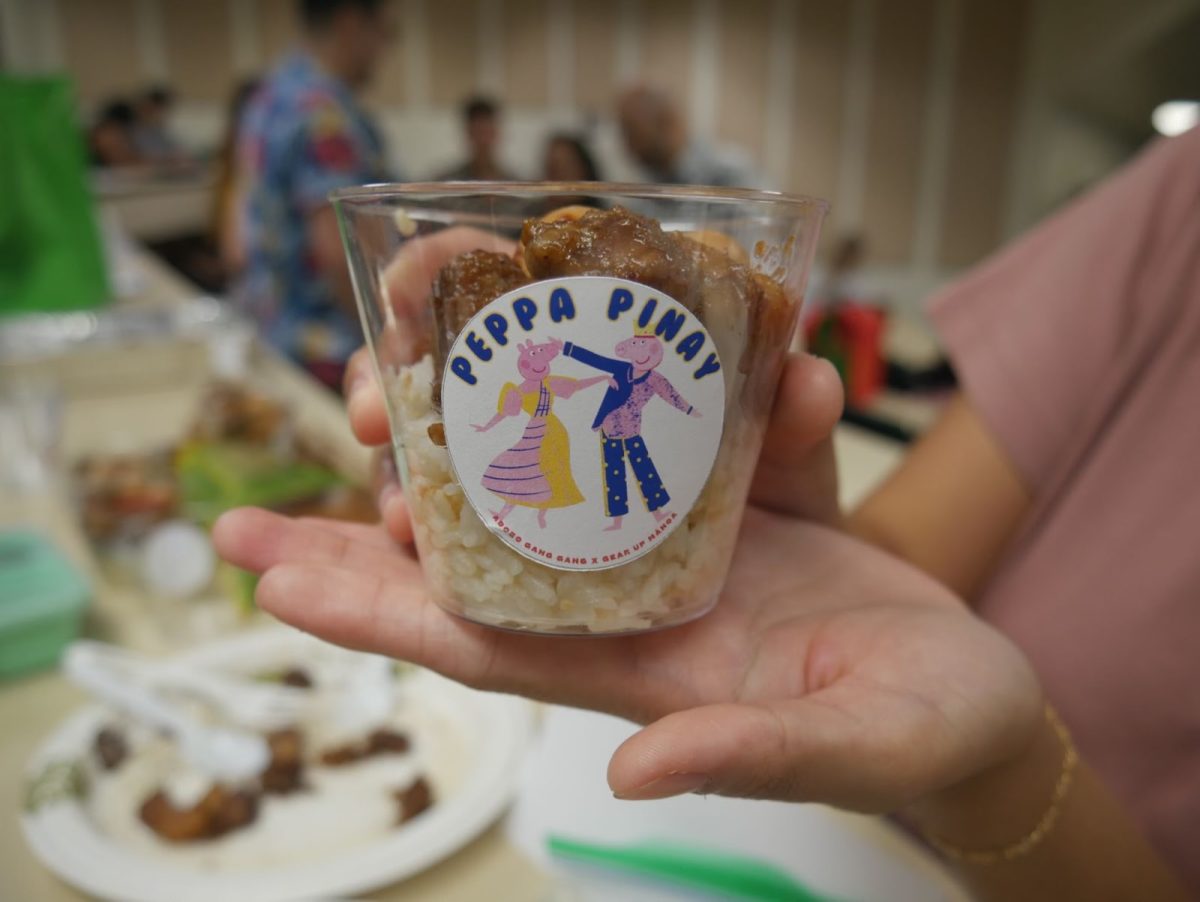An ocean of bottles and microplastics of all shapes and colors was strewn across tablecloths at the Sustainable Ghostlines festival to demonstrate how the consequences of plastic waste may be irreversible without immediate action.
Community action to restore coastlines took place at the Sustainable Ghostlines event on Oct. 20, at Ali’iolani Elementary. Clean-ups and a sustainability festival transformed the grass field partnered with the sounds of reggae music and laughter as keiki to kupuna engaged their community and fostered positive change.
“The things that we do upstream, or mauka, impact what we’re doing downstream,” said Raphael Bergstrom, executive director of Sustainable Coastline, as volunteers boarded buses to clean the Palolo Stream and prevent debris from entering the Ala Wai Canal.
As the night ran on, the festival booths lit up with fairy lights, and among them, the story of a dumpsite turned farmland blossomed. Over the last 20 years, the Kokua Hawaiʻi Foundation has used this recycled land to give back to the community, starting with the saplings.
“By planting this seed in kids’ minds, we can educate them to continue caring for the land,” said Krystel Digrazia, a booth expert at the Kokua Hawaiʻi Foundation.
Kokua’s programs (ʻĀina in Schools and Plastic Free Hawaiʻi) take kids out of the classroom and teach them about the importance of land and water from the island and how its protection is a vital factor for their future.
Global Preservation Initiative yanked the community in by displaying a table full of recovered trash from beachside clean-ups. The message? The impacts of plastic and waste will be long-lasting as they stand now and won’t wait to be saved by the next generation.
A leap of action from the Genki Ala Wai Project aims to have the Ala Wai Canal swimmable and ecologically restored by 2026. Effective microorganisms (EM) are contained in mudballs and dropped to the bottom of the canal to help eliminate the sludge as it slowly dissolves and feeds the organisms.
When the project started in 2020, the sludge was 25 inches, and as of 2024, it has been reduced to three inches, with the beginnings of marine life returning, according to Tom Honan, a three-year active member of the project.
“Ultimately our goal is not to be cleaning,” said Bergstrom.



